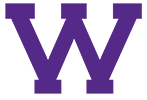sealhall74 wrote: Thu Feb 22, 2018 9:18 pm
Tere North wrote: Thu Feb 22, 2018 8:26 pm
sealhall74 wrote: Thu Feb 22, 2018 7:57 pm
I guess the numbers that stick out to my untrained eye are the +18% increase in program offerings and the -18% decrease in faculty. Maybe online programs can account for some of that.
It was an era of adding degrees. Some of those will come off the books with the program cuts that were initiated in 2016-17, but the students are still being allowed to continue.
What about the 50% increase is costs to students? That has got to hurt enrollment with students opting to spend money elsewhere. Even with the decrease in faculty, class size has still gone down because student numbers have gone down more than faculty numbers.
I was sort of thinking the increase in cost would be no different than at any other school but I might be wrong.
I found this:
https://trends.collegeboard.org/college ... ges-decade
Which says that the average growth rate of tuition from '07-'17 at a public 4-year school was 2.7% per year above inflation.
This says that inflation in that timeframe totaled 18.06%:
http://www.in2013dollars.com/2007-dollars-in-2017%20%20
As for the first number, is the % just totaled up (like 10 years x 2.7%) or is it cumulative? If it's just totaled up, then 27% plus essentially 18% is 45% (as compared to the 50.4% tuition increase for us over that time).
I also found this:
https://www.usnews.com/education/best-c ... ic-schools
Which says the following:
"U.S. News data show that among National Universities, tuition and fees have soared the most for in-state students over the last 10 years. The average in-state tuition and fees at public schools increased from $6,468 in the 2007-2008 academic year to $10,691 in 2017-2018 – a 65 percent jump, according to data reported by 300 ranked National Universities in an annual survey.
In comparison, the average tuition and fees at a private university rose by 49 percent, and the average out-of-state tuition and fees climbed 55 percent during that same period."
Now, our number listed includes tuition, fees, room and board, and I think the above data is just tuition, but I don't think a 50% increase is out of line with what other schools are doing. Is it too much?...I think so. But is it significantly more than other schools...it doesn't look like it. I have not dug into our regional/"peer" institutions to find out their numbers to compare to ours, however. So, it's possible that a lot of that increase is happening in other regions and we are the outlier for our region or something.

 Scott Lawson - Board Admin
Scott Lawson - Board Admin